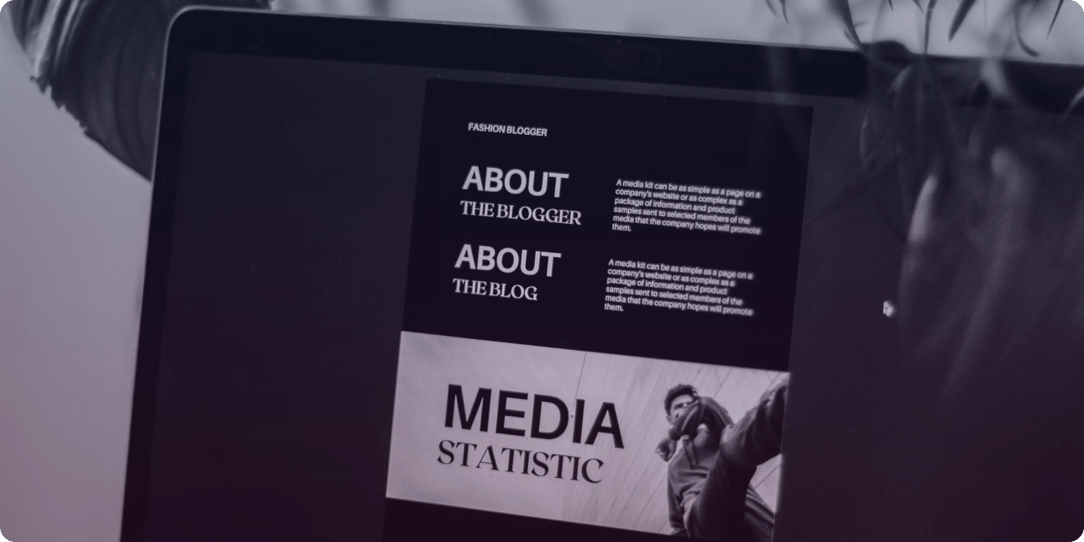May'25·The Pub Way Podcast·5 MIN
AI in Publishing: How Publishers Can Unlock Growth Through Audience-Centered Innovation


Interested to find out more about how our contextual advertising can help you boost your brand?
For Advertisers For PublishersGet the latest news about Contextual Advertising right into your inbox!
In a rapidly shifting digital landscape, publishers face mounting pressure to boost revenue while preserving audience trust. In Episode 16 of The Pub Way podcast, hosts Tina Iannacchino (Seedtag’s VP Publisher Partnerships, North America) and Mike Villalobos (Seedtag’s SVP Stratey & Success) sit down with Dan Benyamin, founder and CEO of Aeon, to explore AI in publishing - from adtech hurdles to creator collaborations, emerging AI influencers, and practical strategies for AI monetization. Below, we unpack the episode’s key moments, demonstrating how publishers can harness AI responsibly, keep the human touch, and unlock new revenue streams.
From Hardware to Headlines: Dan’s Journey
Dan Benyamin is no stranger to disruption. Over a career spanning chip design, social-media platforms, and data products at Condé Nast, he has seen technologies reshape audiences and ad models. At Aeon, his fourth startup, Dan is charting the next wave: helping media owners use AI to automate video production, personalize experiences, and optimize yield.
His adtech origin story selling the first Facebook beta ads by email underscores one constant truth: publishers succeed when they remain user-centric.
Facing Adtech’s Growing Complexity
The User as North Star
Dan recalls the early days of Facebook advertising with no targeting, no placements, just a postage-stamp ad sold for a day. Fast forward, and the adtech stack has ballooned: multiple platforms, countless measurement standards, opaque programmatic flows. Yet publishers often fall into two traps:
- Tech First: Investing heavily in bespoke data platforms and complicated pipelines, losing sight of editorial quality and brand loyalty.
- Platform Dependence: Relying on Google or a handful of ad networks for revenue, ceding control over user relationships.
Dan’s prescription is straightforward: prioritize your readers above all else. Every algorithm tweak, dashboard rollout, or content experiment should answer one question: does this create a better experience for our audience? If not, it risks becoming an expensive dead end.
The Value of Agility
Publishers that treat adtech as an ever-evolving toolkit, rather than a monolithic fortress, will outpace their peers. Dan highlights how rapidly user behaviors can pivot, whether due to a new video format on TikTok or shifting reading habits during major news events. By pairing AI for publishers with nimble workflows, media owners can test new formats, measure engagement in real time, and iterate before budgets are wasted.

Bridging Traditional Publishing and the Creator Economy
A Two-Front Battle
Publishers today are squeezed from both sides. On one hand, the major social platforms (Facebook, Instagram, TikTok) consolidate huge swaths of attention. On the other, a flourishing creator economy has turned individuals into media companies: micro-brands that build dedicated audiences on YouTube, Twitch, or Substack, often with minimal overhead.
Dan warns that consistent collaboration between legacy publishers and independent creators remains uneven. While a handful of partnerships, such as Vogue enlisting YouTube stars for the Met Gala, capture headlines, most publishers have yet to forge sustainable models to co-create content, share revenue, and cross-promote audiences.
Turning Creators into Partners
Yet the potential is immense. Traditional media houses boast seasoned editors, photographers, and brand equity. Creators bring agility, authenticity, and built-in fanbases. Smart alliances can combine those strengths:
- Content Repurposing: Use AI-powered video engines to transform written features or photo essays into engaging short-form clips.
- Co-Branded Sponsorships: Bundle creator channels with publisher sites for advertisers seeking both scale and niche community buy-in.
- Revenue-Share Models: Offer creators a slice of subscription or ad revenue in exchange for exclusive or early-access content.
By leveraging AI for content creation, from automated editing to dynamic personalization, publishers can scale these partnerships without ballooning production costs.
The Rise of AI Influencers and the Case for Transparency
When Bots Become Brand
Dan describes the phenomenon of AI influencers: digital personas designed to engage audiences on social platforms, often without any real human behind the account. Early adopters, such as fashion houses casting AI models, demonstrate AI’s capacity for high-volume, on-brand content. Yet the technology also raises red flags around authenticity, trust, and intellectual property.
Publishers must decide how far to embrace synthetic personalities. Dan suggests two guiding principles:
- Be Transparent: Clearly label AI-generated content or personas. Readers value honesty; misleading them risks reputational damage.
- Focus on Value: If an AI persona informs, entertains, or inspires better than a standard post (without pretending to be human) then it has earned its place. The goal is to enhance, not replace, genuine human connection.
Regulation on the Horizon
As AI content proliferates, regulators and platform owners are racing to define standards. Dan points to spam filters as an early example of automation policing automation: publishers that watermark AI-crafted imagery or sign API agreements with chatbot providers can ensure their content remains discoverable and compliant. Publishers that proactively engage with emerging policies will avoid last-minute compliance headaches.

AI as a Force Multiplier for Monetization
Beyond “Build vs. Buy”
Publishers often wrestle with whether to build in-house AI solutions or license third-party tools. While engineering teams may relish crafting bespoke pipelines, Dan cautions that such projects can distract from core editorial missions. Instead, he recommends:
- Evaluate ROI: Will a custom model truly outperform a commercial offering?
- Partner with Specialists: Use AI for publishers platforms that integrate seamlessly with existing CMS and ad stacks.
- Modular Adoption: Begin with high-impact use cases (automated video summaries, headline generators, or ad yield forecasting) before extending capabilities.
Five Low-Hanging Fruits for AI-Driven Revenue
- Automated Content Tagging & Personalization
Natural language processing can instantly categorize articles by topic, sentiment, and reader intent, fueling on-site personalization and boosting subscription conversions. - Video Production at Scale
Leverage AI video editors to turn long-form interviews or articles into short social teasers, generating new ad inventory and ancillary sponsorship opportunities. - Dynamic Ad Creative
Implement responsive banners or video ads that adapt messaging, call-to-action, and imagery based on real-time page context, raising click-through rates and CPMs. - Yield Optimization Tools
AI algorithms can forecast demand, identify under-monetized ad slots, and recommend price floors - putting publishers in control of their programmatic outcomes. - Rights Management Automation
Automated scans can detect copyright flags in submissions or user-generated content, protecting intellectual property and avoiding legal pitfalls.
Data-Driven Decision Making, Powered by AI
From Dashboards to Decisions
Publishers generate vast troves of behavioral data (pageviews, scroll depth, engagement time) but insights often remain locked behind manual reports. AI offers a leap forward:
- Anomaly Detection: Instant alerts when traffic patterns or ad performance deviate, so teams can respond to banner blockers or viral spikes in real time.
- Predictive Churn Models: Early warnings when subscribers show signs of disengagement, triggering targeted retention campaigns.
- Cross-Channel Attribution: A unified view across articles, newsletters, social posts, and podcasts - revealing which touchpoints truly drive ad revenue or subscriptions.
By embedding AI into the publishing process, editorial and commercial teams alike move from gut instinct to evidence-based strategies.
Balancing Automation with the Human Touch
The Perils of Overreliance
While AI can draft news articles or produce quick video summaries, Dan emphasizes that publishers’ most enduring asset is editorial credibility. Over-automation risks diluting brand voice, undermining trust, and scaling errors. Instead, he advocates:
- Human-In-The-Loop: Any AI-generated draft or creative asset should undergo editorial review for accuracy and tone.
- Ethical Guardrails: Establish internal guidelines on which content types (breaking news, investigative features, expert analysis) remain strictly handcrafted.
- Continuous Training: Use feedback loops where editorial teams flag AI missteps, refining models for better performance over time.
In this way, generative AI becomes a collaborator, not a replacement, empowering journalists and marketers to focus on high-value work.
Preparing for AI’s Next Chapter
AI for Publishers: A Mindset Shift
Dan’s closing advice is to treat AI not as a magic bullet but as a performance-enhancing tool. Publishers that:
- Stay Curious about emerging models and platforms
- Invest in Data Literacy across their teams
- Foster Cross-Functional Collaboration between editorial, technology, and sales
will build the resilience to adapt when the next big disruption arrives, be it voice interfaces, immersive media, or new regulations.
Six Months to Action
- Audit your current AI and data projects.
- Pilot one AI-powered tool in content creation or ad yield.
- Measure its impact on engagement, revenue, or efficiency.
- Scale successful experiments and sunset low-impact efforts.
- Document ethical guidelines and compliance checkpoints.
- Communicate wins and lessons to all stakeholders, building momentum for further AI adoption.
Tune In and Take the Wheel
AI-driven innovation is reshaping the publishing industry at every corner, from automated content creation and video automation to real-time yield optimization and personalized experiences. The Pub Way episode with Dan Benyamin offers a masterclass in how AI in publishing can become a catalyst for growth, not a source of distraction.
Ready for more actionable insights? Subscribe to The Pub Way and explore the full conversation with Aeon’s Dan Benyamin.
Discover more episodes and dive into the discussion
From Guesswork to Precision in Advertising: Intention Based Targeting and AI Intention Models
See next





